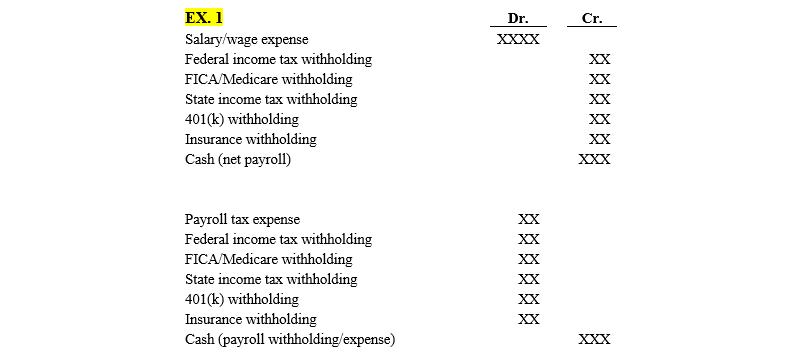
However, each lender is limited by its own financial products and lending requirements. Types of bank financing for small businesses include term loans, business lines of credit, equipment loans, commercial real estate loans and business credit cards. Through debt financing, you can quickly access capital that you might not otherwise be able to get for weeks or even months. Bank loans, government loans, merchant cash advances, business credit lines and business credit cards are all forms of debt financing, which you must repay even if your company fails. Among the basic financial tools that all business owners should consider is one or two business credit cards. If you pay in full each month, consider rewards cards that earn you cash back or other perks.
Commercial Real Estate Loans

If you think a term loan is the right small business funding option for you, you’ll want to start by applying for a bank loan. This loan is tied to your personal credit, not the business credit score, which means you’ll be personally liable to repay the loan. When you’re considering a business loan, it can be worthwhile to understand all of your options before going forward with financing. Business loan lenders offer a variety of products, so finding the financing that works for your business can put you in the best possible position to repay your debt. As an alternative lender for small businesses, there is a lot to like about Fora [Financial].
The Best Options for Financing a Business
- Many investors and banks have not invested because they think there’s too much risk involved.
- If your business makes less than that, there are business loans for low-revenue companies that may offer funding options for your business.
- If possible, giving your business time to become more established can make qualifying for an affordable loan easier.
- Don’t be afraid to consult a professional, but make sure you have a handle on the day-to-day management of your business’s finances, as well as a plan for the future.
- These institutions also offer business training, coaching and other educational resources.
This being said, similar to bank loans, you should have at least two years in business, great credit, and strong business financials to qualify for an SBA loan. Additionally, SBA loans will require a thorough application process and will be slow to fund. Partially guaranteed by the SBA and issued by SBA lending partners (like banks), these loans offer low interest rates, long repayment terms, and large loan amounts. Plus, there are multiple SBA loan programs to choose from—such as the 7(a) program, microloan program, and 504/CDC program—to meet a wide variety of financing needs.

How to Organize Your Business Finances So You Can Afford Your Loan

It is important to remember that business finances aren’t just about your earnings; they’re also about how you spend your money and where you get it. When it comes to the latter, you should understand the two main funding categories below. We collaborate with business-to-business vendors, connecting them with potential buyers. In some cases, we earn commissions when sales are made through our referrals.
Minority Depository Institutions are financial institutions focused on serving minority communities. Like CDFIs, the goal of MDIs is to provide access to capital and financial services and promote economic development in underserved communities. https://www.quick-bookkeeping.net/how-to-do-a-journal-entry-for-purchases-on-a-notes/ Technically speaking, business capital is anything that generates value for your business. That can include financial capital like cash, human capital like employees and personnel or physical capital like real estate and intellectual property.
Determine if you qualify to get a business loan
The Targeted Advance (Grant) that offered small businesses impacted by COVID-19 up to $15,000 in conjunction with an application for an Economic Injury Disaster Loan (EIDL). Costs vary, depending on the type of crowdfunding (rewards or equity, for example) and the platform you use. This program encourages small businesses to engage in federal research and development that has the potential for commercialization. Find out if the SBIR’s competitive awards-based program makes sense for you. To increase your chances of securing a loan, you should have a business plan, expense sheet, and financial projections for the next five years. These tools will give you an idea of how much you’ll need to ask for, and will help the bank know they’re making a smart choice by giving you a loan.
Although you do need good credit to qualify for the best business credit cards, there are options for business owners who are rebuilding credit as well. If you need a large amount of capital (over $50,000), a term loan or SBA loan will be a stronger option than a business credit card. Online lenders may specialize in specific types of business loans, including alternative financing like merchant cash advances. Repayment terms tend to be five years and under, shorter than traditional banks that can go as long as 10 to 25 years. Another significant way you can separate your personal and business finances is to get a business credit card. With this card, you’ll be able to make purchases for your business and only for your business.
Like many alternative lenders, QuickBridge specializes in short-term loans and fast funding. A benefit to using QuickBridge is their dedicated Funding Specialists, who can help you find the best financing option for your business. Funds from QuickBridge can be used for https://www.kelleysbookkeeping.com/ any purpose, and you could be eligible for an early repayment discount. How you get small-business capital depends on why you need capital and how long you’ve been in business. Startups may consider self-funding, working with angel investors or applying for grants.
While it’s tempting to seek as much money as you can get your hands on, you only want to ask for as much as you need. Create a detailed list of the items you’ll purchase and the estimated cost. Document the projected cost to hire and how much the employee will be paid. Figuring out how much you need—and how long of a repayment term you need—will be easier after you’ve updated your financial projections to estimate how much you need and when you’ll be able to pay it back. With the same benefits as an angel investor (including equity), these firms can take your business from idea to market in exchange for shared ownership. These firms invest in phases, or “rounds,” putting hundreds of thousands, or even millions, into a company they believe has the potential to make them a lot of money.
Fumbling with cash flow management is one of the main culprits behind small-business failures. In fact, Business Insider reports that 82% of small-business failures are directly attributed to poor cash flow management. Begin by listing each of your income sources and breaking down your expenses. Don’t forget to include both the fixed costs (rent, utilities, salaries) and the variable costs (marketing, office supplies, maintenance). However, your budget should also account for those unexpected expenses, savings for future investments and an emergency fund for those rainy days.
If your SBA loan application is denied, you’re entitled to a notice of denial that details the reasons; you may receive this directly from the SBA or from your lender. Small business borrowers with bad credit also qualify for less competitive rates and pay more in interest over the life of the loan. If possible, giving your business time to become more established can make qualifying for an affordable loan easier.
Moreover, because merchant cash advances are paid back on a weekly or daily basis, directly from your sales, they cut into your daily cash flow, often making them difficult to repay. Therefore, you’ll always want to consider other small business financing options before turning to a how to pay taxes as a freelancer merchant cash advance. Plus, the application process isn’t easy; you may find yourself trapped under a heap of documents while you work through the appropriate forms. Implementing systems and best practices for keeping track of expenditures and revenues is key to managing cash flow.

 Centro Empresarial El Nuevo TRIGAL
Centro Empresarial El Nuevo TRIGAL  proyectos@mmgsa.com
proyectos@mmgsa.com  (+51) 01 273-0641
(+51) 01 273-0641 






